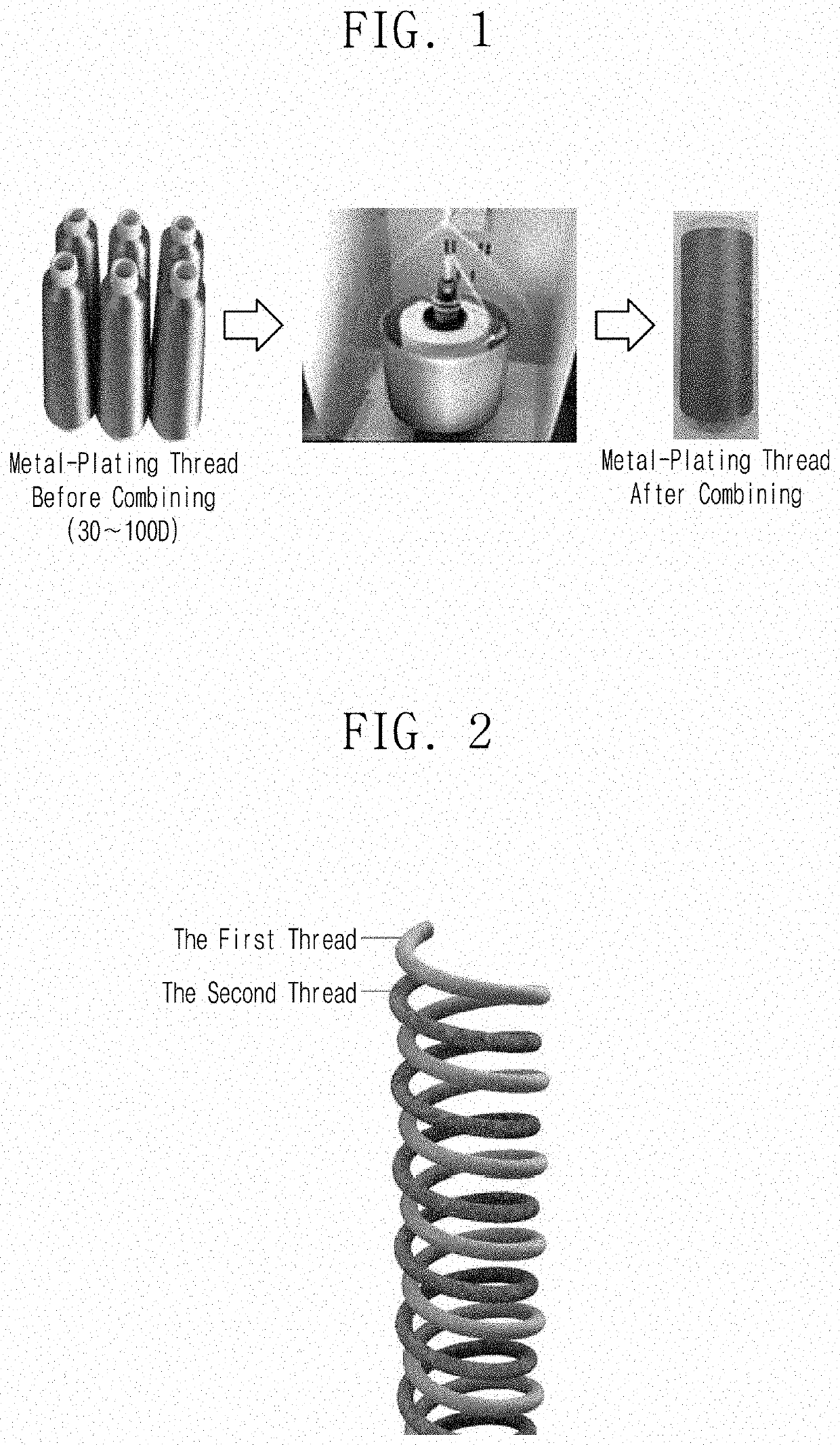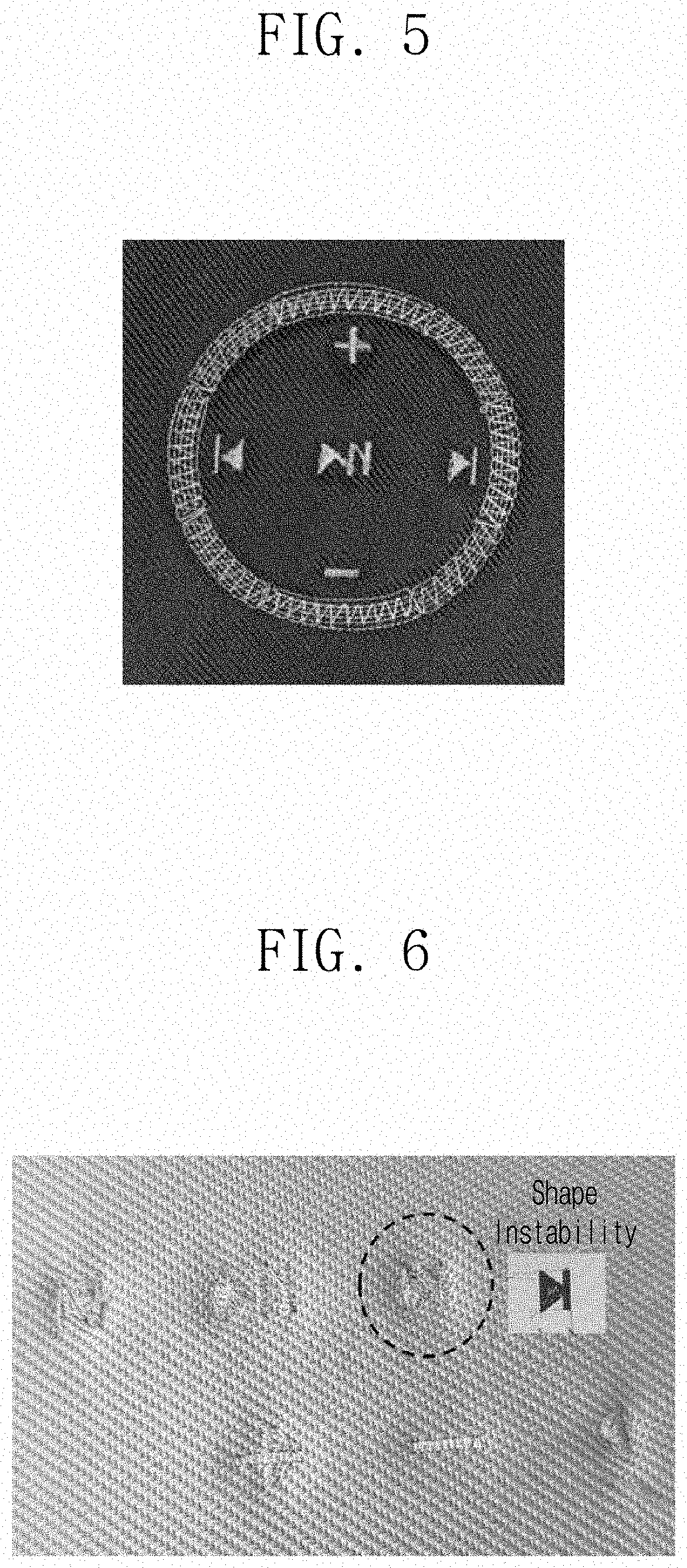Conductive Embroidery Thread, Conductive Embroidery Fabric Using the Same, and Use of the Conductive Embroidery Fabric
a technology of conductive embroidery fabric and conductive thread, which is applied in the direction of embroidering machines, superstructure subunits, textiles and paper, etc., can solve the problems of low embroidery quality, easy loss of electrical properties, easy to lose, etc., and achieve high embroidery quality, high sensibility, and economic efficiency of production
- Summary
- Abstract
- Description
- Claims
- Application Information
AI Technical Summary
Benefits of technology
Problems solved by technology
Method used
Image
Examples
Embodiment Construction
[0078]Hereinafter, the present disclosure will be described in more detail through examples. These examples are provided to describe the present disclosure in more detail, and the scope of the present disclosure is not limited to these examples.
Manufacture of Conductive Embroidery Thread
[0079]After a conductive fabric coated with silver through an electroplating process is manufactured, the thread of the coated fabric is undone and then wound to manufacture a metal plated thread (X static, USA), which is used as a conductive thread, the fineness of a single strand of the conductive thread is selected as one of 30D and 70D, the number of strands and the number of turns are set, and the conductive thread is fed into an embroidery machine (Brother Sewing Machine Innovis NV-950) and plied and twisted together at the speed of 10,000 rpm for the application to an embroidery process. In this instance, an electrical resistance value of the conductive thread is 0.079 to 0.098 Ω / cm.
[0080]In ...
PUM
| Property | Measurement | Unit |
|---|---|---|
| width | aaaaa | aaaaa |
| vertical lengths | aaaaa | aaaaa |
| size | aaaaa | aaaaa |
Abstract
Description
Claims
Application Information
 Login to View More
Login to View More - R&D
- Intellectual Property
- Life Sciences
- Materials
- Tech Scout
- Unparalleled Data Quality
- Higher Quality Content
- 60% Fewer Hallucinations
Browse by: Latest US Patents, China's latest patents, Technical Efficacy Thesaurus, Application Domain, Technology Topic, Popular Technical Reports.
© 2025 PatSnap. All rights reserved.Legal|Privacy policy|Modern Slavery Act Transparency Statement|Sitemap|About US| Contact US: help@patsnap.com



